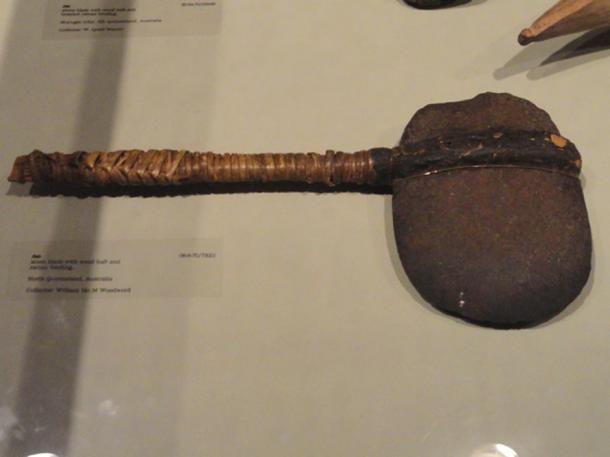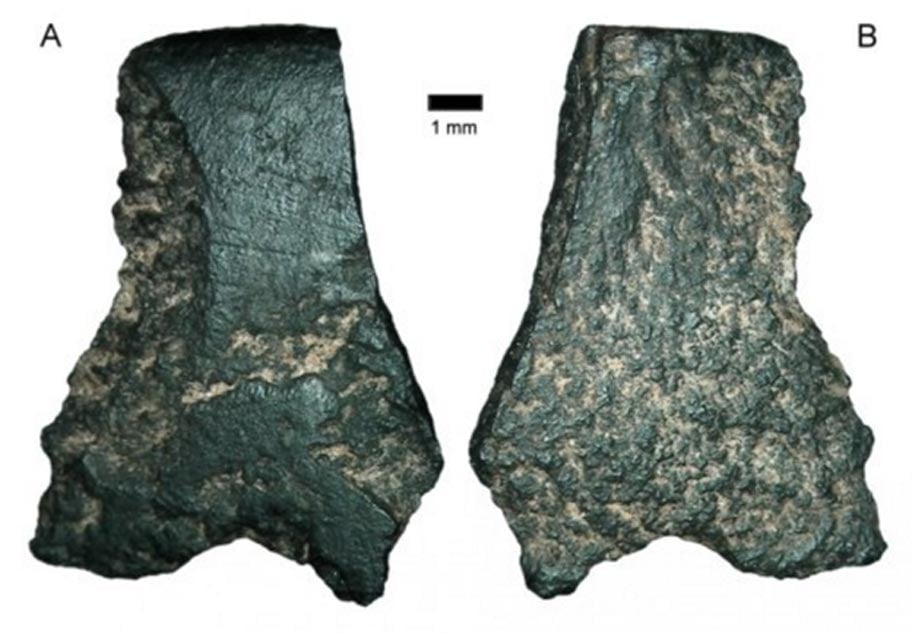World's Oldest Axe Fragment Found in Australia
Australian archaeologists have discovered a piece of the world's oldest axe in the remote Kimberley region of Western Australia.
The axe fragment is about the size of a thumbnail and dates back to a Stone Age period of 45,000 to 49,000 years ago -- at, or very soon after, the time humans arrived on the continent, and more than ten millennia earlier than any previous ground-edge axe discoveries.
The University of Sydney's Professor Peter Hiscock is the lead and corresponding author of a new analysis of the fragment published in the journal Australian Archaeology. He said the axe revealed that the first Australians were technological innovators.
"Since there are no known axes in Southeast Asia during the Ice Age, this discovery shows us that when humans arrived in Australia they began to experiment with new technologies, inventing ways to exploit the resources they encountered in the new Australian landscape," he said.
The axe fragment was initially excavated in the early 1990s by lead archaeologist Professor Sue O'Connor from the Australian National University (ANU) among a sequence of food scraps, tools, artwork and other artifacts from Carpenter's Gap, a large rock shelter known to be one of the first sites occupied by modern humans.

The fragment was dug up in the 1990s in Windjana Gorge National Park, Western Australia. (CC BY-SA 2.0)
"Nowhere else in the world do you get axes at this date. In Japan such axes appear about 35,000 years ago. But in most countries in the world they arrive with agriculture after 10,000 years ago," Professor O'Connor said.
- Five Huge Bronze Age axes discovered in a field in Jutland, Denmark
- Written in Stone: Neolithic Weapons and Tools of the Australian Aboriginals
In 2014, as further study was being carried out on the objects dug out of the site, Professor Hiscock's team discovered a small fragment of a polished axe, recovered from the oldest levels of the site.
New studies of the fragment have revealed that it comes from an axe that had been shaped from basalt then polished by grinding it on another rock until it was very smooth.
The fragment came from the polished edge when it was later re-sharpened. The team believes the axe was most likely carried away to be used elsewhere, leaving the fragment behind.

World's oldest axe fragment, seen here under a microscope, is the size of a thumbnail. Credit: Australian Archaeology.
"Polished stone axes were crucial tools in hunter-gatherer societies and were once the defining characteristic of the Neolithic phase of human life. But when were axes invented? This question has been pursued for decades, since archaeologists discovered that in Australia axes were older than in many other places. Now we have a discovery that appears to answer the question," said Professor Hiscock.
Professor O'Connor said evidence suggests the technology was developed in Australia after people arrived around 50,000 years ago. "We know that they didn't have axes where they came from. There are no axes in the islands to our north. They arrived in Australia and innovated axes," she said.
Professor Hiscock said the ground-edge axe technology specifically arose as the dispersing humans adapted to their new regional landscapes.
- New research suggests Neanderthal children played with toy axes
- 5,500-year-old complete hand axe unearthed in prehistoric seabed in Denmark

Axe, North Queensland, Australia. Exhibit from the Pacific Collection, Peabody Museum, Harvard University, Cambridge, Massachusetts, USA. (Public Domain)
"Although humans spread across Australia, axe technology did not spread with them. Axes were only made in the tropical north, perhaps suggesting two different colonizing groups or that the technology was abandoned as people spread into desert and sub-topical woodlands," he said.
"These differences between northern Australia, where axes were always used, and southern Australia, where they were not, originated around the time of colonization and persisted until the last few thousand years when axes began to be made in most southern parts of mainland Australia."

Stone axe, Alfred William Howitt: The Native tribes of South-East Australia. (Public Domain)
The team's latest discoveries are published in this month's issue of the journal Australian Archaeology.
Featured image: World's oldest axe fragment, seen here under a microscope, is the size of a thumbnail. Credit: Australian Archaeology.
The article ‘World's oldest axe fragment found in Australia’ was originally published on Science Daily.
Source: University of Sydney. "World's oldest axe fragment found in Australia." ScienceDaily. Science Daily, 10 May 2016.




















Comments
Ground edge axe most likely used with a wooden handle, not a flaked hand axe, in other words a designed axe as opposed to a broken stone suitable for chopping something
I have a hand axe that is about 1,500,000 years old (Acheulian) from the lower Paleolithic. Please explain why a Middle Paleolithic axe fragment is the “world’s oldest?”
Jack Kilmon
I looked at the photos and thought it looked as if it might be basalt. So there is a problem with this, is that there isn't basalt in the Kimberley region. Lots of other types of rock, but not basalt.
So colour me suspicious, as there is a very strong PC element in Australian archeology, and has been for several decades.
Is it possible that this small fragment of rock is simply a quirk of nature?
Or could it be a small piece of ancient rock which has been damaged more recently so that it appears to be from an axe?